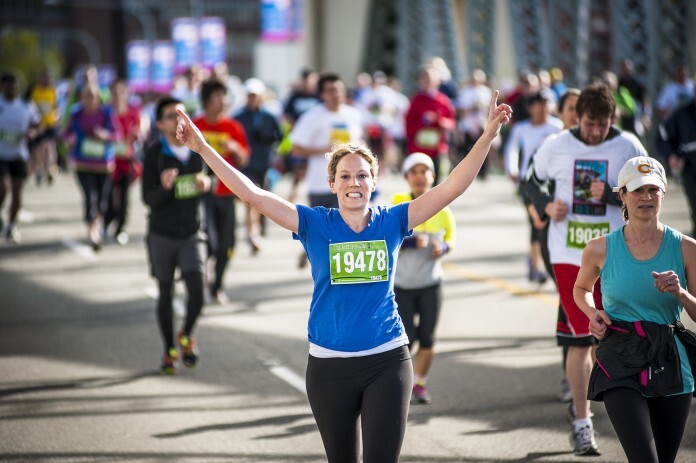Running News Daily
Running News Daily is edited by Bob Anderson. Send your news items to bob@mybestruns.com Advertising opportunities available. Train the Kenyan Way at KATA Kenya and Portugal owned and operated by Bob Anderson. Be sure to catch our movie A Long Run the movie KATA Running Camps and KATA Potato Farms - 31 now open in Kenya! https://kata.ke/
Index to Daily Posts · Sign Up For Updates · Run The World Feed
How to conquer your very first 10K
HOW TO PREPARE FOR A 10K RUN FOR THE FIRST TIME
10k runs are super popular because the distance is manageable for most people. Many people choose 10k as their first running event distance. Here are some tips to prepare for the first attempt at a 10k run:

1. CONSISTENCY IS KEY
Ideally, pick a 10k run at least eight weeks away. This gives plenty of time to get in enough running to train the body (especially the legs) to tolerate running for an extended period of time.

Beginner runners may be running (and walking) for over an hour. Working up to this duration/distance requires running at least three times per week. Speed and duration of the runs are less important than just getting out and running or walking a couple of times a week since polarized training can improve performance for recreational runners. Don’t add more than 15 percent more total distance per week.
2. BUILD UP LONG RUN DISTANCE
Work up to at least 75 percent of the distance (7.5 km) for the long runs. Try to get in a long run once a week or at least every other week. The long runs will help develop the muscular endurance to tolerate running for 10k. They will also help build confidence that the distance is doable.
An easy way to add distance to the long run is to add 500m – 750m to the longest runs usually done. It may not seem like much, but it will add up!
3. DON’T WORRY ABOUT SPEED
One does not burn considerably more calories by running faster. Speedwork like HIIT and other forms of interval training can add too much intensity for new runners to tolerate. If the goal is just to finish the first 10k run, don’t worry about doing hard runs (unless you want to because they’re “fun”). Instead, just make sure to consistently train and avoid injury.
4. TAKE RECOVERY SERIOUSLY TO AVOID INJURY
Beginner runners might be tempted to run through the soreness and pain that comes from training consistently for their first 10k. Knowing when to ignore the pain and push through comes with athletic experience—beginner runners don’t have this luxury.
Novice runners are at a higher risk for injury than others, as noted in The American Journal of Sports Medicine. Here are some indicators that one should stop or drastically reduce training:
Sharp pains that come on suddenly mean stop running immediately or risk getting injured.
Prolonged soreness and swelling are likely from an overuse injury. Get in some RICE (rest, ice, compression, elevation) to reduce swelling and speed up recovery. Don’t keep running on the injury, or it could get much worse.
Sickness symptoms below the neck are not worth continuing to train.
5. FOLLOW A 10K TRAINING PLAN
adidas Running Premium Members can create a training plan suited to their ability level, goal finishing time and race distance. The training plan guides training runs so new runners never run too fast and stay motivated to finish their run strong! Download adidas Running to check out other unique features like Live Cheering!
HOW TO PREPARE FOR A 10K RUN (INTERMEDIATE-ADVANCED)
Intermediate or advanced runners are looking to improve their 10k time. They may also use 10k runs to build speed for a longer event like a half marathon or marathon. 10k is a great distance to build speed and endurance without adding tons of fatigue. It requires good endurance, a high threshold and maybe even a good sprint at the end. In other words, it’s a great distance to develop into a well-rounded runner. Follow these tips to try for a new 10k PR:
1. MASTER PACE CHANGES
Running a faster 10k requires training to run a faster 10k. Plan to include HIIT sessions and other types of interval workouts in the leadup to the race. Long runs with several kilometers run at or slightly above race pace are key workouts for race-specific intensity. Tempo and threshold workouts should be a staple in a quality, intermediate to advanced running plan.
2. STRENGTH TRAINING
Advanced runners and intermediate runners looking to jump to the next level should likely be doing strength training. As found in Medicine and Science in Sports and Exercise, specific strength training can improve running performance. This doesn’t mean going to the gym to bulk up. Instead, bodyweight and functional training are sufficient. Check out adidas Training for a running-specific strength training program alongside a running training plan.
3. RECOVER HARD TO TRAIN HARDER
Intermediate runners might be tempted to skimp on recovery to get in another hard training session. This is what separates intermediate runners from unlocking advanced running performance. Elite runners know when it’s time to take it easy and put their feet up on the couch for an afternoon nap.
4. GET A GOOD TRAINING PLAN
Following a training plan tailored to specific goals and abilities is vital for intermediate to advanced runners. adidas Running even has customizable plans to help achieve a 40-minute 10k. Become a Premium Member and start a plan to set a new PR in just a few weeks!
5. WARM UP
Make sure to warm up properly on race day. Learn how warm-ups can optimize performance and find the perfect warm-up routine.
Consult a medical professional when in doubt.
by Morgan Cole
Login to leave a comment




